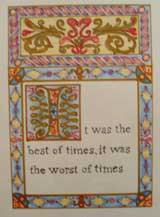An illuminated manuscript is a manuscript in which the text is supplemented by the addition of decoration, such as decorated initials, borders, and miniature illustrations. In the strictest definition of the term, an illuminated manuscript only refers to manuscripts decorated with gold or silver.
Goal (Terminal Objective):
Students will create an illuminated manuscript panel.
Objective:
Using the definition of a traditional and historical illuminated manuscript, students will create a panel using a famous quote from literature.
National Standards:
Visual Arts Grades 9-12 Content Standard 1: Understanding and applying media, techniques, and processes
Visual Arts Grades 9-12 Content Standard 2: Using knowledge of structures and functions
Visual Arts Grades 9-12 Content Standard 3: Choosing and evaluating a range of subject matter, symbols, and ideas.
Visual Arts Grades 9-12 Content Standard 4: Understanding the visual arts in relation to history and cultures (World History and Literature Cross Curriculum Connection)
Purpose:
Students will demonstrate an understanding of embellishment and typography in this lesson. Students will gain an appreciation of the history of illuminated manuscripts and apply traditional designs and symbols in their composition. Students will demonstrate a fondness of a famous quote from literature that they are familiar with.
New Vocabulary:
illuminated manuscript, Middle Ages, Renaissance
Materials:
Bristol board, tracing paper, and the following Sargent Art media:
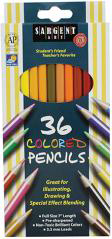
#22-7236 Colored Pencils
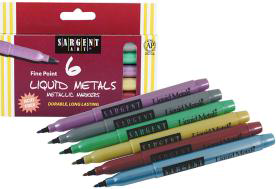
#22-1507 Metallic Fine Point Peggable Carton Markers
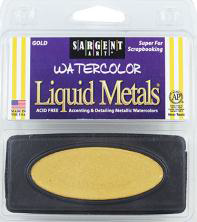
#66-8081,82 Liquid Metal Watercolor Cakes
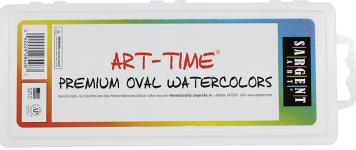
#22-8426 Art-Time Premium Oval Watercolor Set

#22-7244 144 ct. Graphite Pencils

#36-1012 36 ct. Pink Eraser Pack
Time:
approximately 45 class periods
Introduction and Motivation (Set):
View many color examples of historical illuminated manuscripts. Give students a brief history lesson about the culture in the Middle Ages and the Renaissance the time periods that many of the best examples of illuminated manuscripts survive from. There are also many contemporary books available that offer wonderful visual examples of decorative text. Discuss the art of typography and have students practice different lettering styles in their sketchbooks. A current magazine for the students to flip through will show a wide variety of lettering styles. Also, spend some time discussing quotes from literature that the students are familiar with. By a junior level of English, students should be knowledgeable about some quotes from classic literature.
Instruction:
- Begin by plotting out the format of the panel. The example is approximately 5×7”. Lightly draw the embellishment of the manuscript panel. Tracing paper can be used to aid in symmetrical designchoices.
- Allow students to choose either colored pencils and markers or watercolors to complete their illumination. A combination of these media gives a desirable effect as well.
- Add a good amount of metallic embellishments, as this is an important part of an illuminated manuscript. The fine tip Sargent liquid metal markers or liquid metal watercolors are excellent media forthis.
- Make the first initial of the chosen quote very decorative and use a nice choice of lettering for the remainder of thequote.

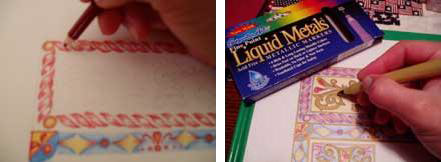
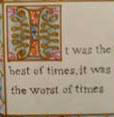
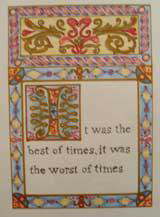
Activities:
(1) Guided Practice:
a) As a group activity, look at many visual examples of illuminatedmanuscripts.
b) As a class, have students practice a variety of lettering forms andstyles.
c) Discuss with students the social context of the Middle Ages andRenaissance.As a class, brainstorm famous and familiar quotes from literature that the students could choose touse.
(2) Independent Practice and Check forUnderstanding: a) As students work, teacher circulates room to help with individual questions dealing with layout of the composition and technical issues with themedium.
b) Teacher offers individual assistance with students’ composition layout and attention to necessary details to achieve a historicallycorrect.
(3) Closure: a) Conduct a class critique and discussion of the completedpaintings.
b) Have students introduce why they chose the particular quote that they used in theirproject.
c) Display these all together in a visible sight for the school population to enjoy. The English classroom hallway would be a greatplace.
Tips:
If using the liquid metal markers, do all the other colors first.
Notes:
Coordinate with the English teachers and have all the students choose a quote from a book that they are all currently reading.
Evaluation:
Grade final compositions using a teacher created rubric (scored 110 with 10 being the highest) based on the following criteria:
> composition (use of embellishment, metallic decoration, and lettering)
> use of color
> technical use of medium
> individual creativity
> craftsmanship and effort
Extension:
Students could draw and paint Kokopelli as he looks on the rock petroglyphs. Spraying water on sandpaper allows the sand to be removed using a nail to scratch into the sandpaper imitating actual petroglyphs.
Resources:
http://www.win.ua.ac.be/~pavp/genea/kirby/index1.html
http://www.bodley.ox.ac.uk/librarian/rpc/gg2gg/slide19.jpg
http://www.litquotes.com/
http://www.britannica.com/EBchecked/topic/283009/illuminatedmanuscript
Art Consultant



